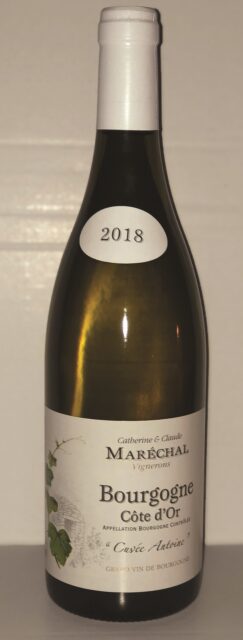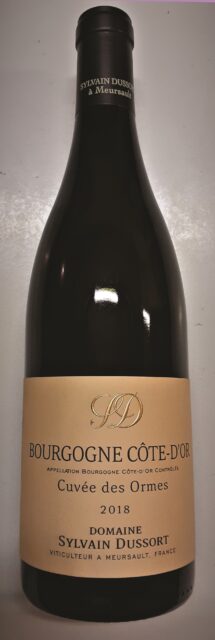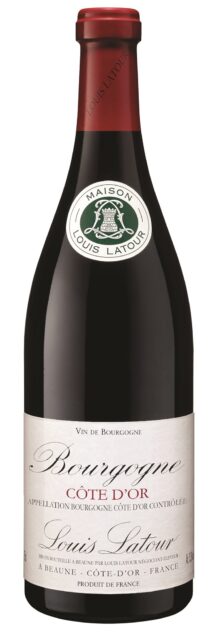This website uses cookies so that we can provide you with the best user experience possible. Cookie information is stored in your browser and performs functions such as recognising you when you return to our website and helping our team to understand which sections of the website you find most interesting and useful.
Top 10 wines from Bourgogne Côte d’Or
A recent change in geographical denomination has highlighted the special characteristics of Bourgogne Côte d’Or. Patrick Schmitt MW tastes 10 wines from the new classification.
While Bourgogne is rightly famous for crafting the world’s finest and rarest wines from Chardonnay and Pinot Noir, the majority of this French region’s production is moderately priced.
The area’s reputation may be built around Grand Cru expressions and wineauction price records, however nearly 52% of the output is the relatively affordable and generic Régionale Bourgogne AOC. This entry point to the region’s wines offers advantages to producers, allowing them to blend from throughout Régionale Bourgogne appellations, taking in terroirs from the far south to the extreme north of the region, from the Mâconnais to Grand Auxerrois.
But what if you want to express something more specific, a wine from the heart of Bourgogne, but one that falls outside of the strictures of Village-level Bourgogne appellations? It might come from the great vineyards of the Côte de Beaune or Côte de Nuits, but how would the consumer know this if it was labelled as Bourgogne Pinot Noir or Chardonnay? After all, if the wine offered an affordable taste of Bourgogne’s great terroirs, and a stepping stone to something even finer, then there ought to be a way of signifying this?
Well, in 2017, a solution to this issue was found with the launch of a new geographical denomination added to the AOC Bourgogne: Bourgogne Côte d’Or. While this was approved by the Institut National des Appellations d’Origine (INAO) in June 2017, it is only in the past couple of years that wines bearing its name have been reaching the shelves of major retailers around the world, with more producers adopting the classification with each vintage.
PLANTING DENSITY
Bourgogne Côte d’Or is a description that can be applied to any Bourgogne produced within a 430ha strip of vineyards occupying the lower slopes of the Côte de Beaune and Côte de Nuits, as long as the wine is made to stricter rules on planting density and yields than those for AOC Bourgogne.
While there are wines made from the highest points of the region that can use the Bourgogne Hautes Côtes de Beaune Régionale appellation – or its equivalent further north, Bourgogne Hautes Côtes de Nuits – the new term, Bourgogne Côte d’Or, can be employed for wines from vineyards beneath the mid-slope villages, but above the plains, that provide grapes for red or white Bourgogne.
The region introduced the change because producers in the Côte d’Or felt their wines needed differentiating on the basis of site and quality. After all, the Côte d’Or takes its name from a shortening of the word Orient, because the slopes are east facing, and that brings about a difference in style compared with red or white Bourgogne, which could be sourced from a greater range of vineyard types, including flatter sites. Furthermore, while there is a lot of awareness about the Côte d’Or, before 2017 there was no official classification to benefit from that.
Currently, around 430ha of vineyards are being used to produce wines from Bourgogne Côte d’Or, according to Bruno Pepin, commercial director of Maison Latour. Highlighting the value of the new classification for the producer, he says: “We have a three-hectare block of vines between Pernand-Vergelesses and AloxeCorton that was blended into our Bourgogne Chardonnay, but when Bourgogne Côte d’Or was announced, we isolated it and now we label it Bourgogne Côte d’Or.”
He added that this was warranted in terms of style and quality, saying: “It has more concentration and balance than Bourgogne Blanc.”
Not only has the new classification allowed Maison Latour to bring recognition to this area of vines, but it is also commercially powerful, because of the knowledge of the name Côte d’Or. “Not everyone knows Bourgogne in detail, but as soon as you open a book or click on a page, Côte d’Or is the first name that stands out; it’s the best name we could have used,” says Pepin.
And the new name allows producers to supply a rising demand for high-quality Bourgogne at more affordable prices. “The consumer is looking for wines between £10 and £20 [a point at which Bourgogne Côte d’Or tends to retail], but these are becoming harder to find,” says Pepin, referring to the rising prices of the region’s Village-level wines.
In other words, the new classification is filling a price gap in wines from Bourgogne, while employing a recognised term, and celebrating a specific terroir. Bearing all this in mind, it’s no wonder that more producers are using the term Bourgogne Côte d’Or.
BOURGOGNE CÔTE D’OR: A TOP 10
 Albert Bichot, Bourgogne Côte d’Or, Secret de Famille, 2018
Albert Bichot, Bourgogne Côte d’Or, Secret de Famille, 2018
An attractive, open, youthful nose with subtle notes of nuts and honey, citrus and pear. In the mouth, the wine has a touch of oily richness, and flavours of beeswax, apple and lemon, then a long, fresh, finish, with a hint of hazelnut. It’s a medium-weight wine with some chalkiness.
RRP: £23 (Honest Grapes) Domaine Michelot (Meursault), Bourgogne Côte d’Or, 2018
Domaine Michelot (Meursault), Bourgogne Côte d’Or, 2018
On the nose, this is open and youthful, with aromas of nuts, pear and lemon, combined with a touch of smoke. The palate is gently oily, smooth, mouthfilling and complete, with some pear, a hint of grapefruit and a touch of hazelnut and freshly-struck match. It has a salty, slightly chalky finish, and while it’s soft it’s also fine and fresh, as well as persistent.
RRP: £12.50 (Brunswick Fine Wines)

Catherine & Claude Maréchal, Bourgogne Côte d’Or, Cuvée Antoine, 2018
This begins with a gently honeyed nose, with apple and pear notes. The palate is quite full, with lots of honey and ripe pear, a touch of peach too, then comes flavours of lemon and hazelnut. The finish is long and quite intensely citric – it is almost piercing after an oily mid palate, making it mouth-watering.
RRP: £26 (The Stroud Wine Company)
 Domaine Sylvain Dussort (Meursault), Bourgogne Côte d’Or, Cuvée des Ormes, 2018
Domaine Sylvain Dussort (Meursault), Bourgogne Côte d’Or, Cuvée des Ormes, 2018
This has quite a powerful, youthful nose, some wood shavings, then pear, citrus and chalk; it is complex and inviting. The palate is lovely, with intense fresh ripe lemon fruit, piercing, with a background nutty oak influence, and a lasting zesty, chalky finish. Fine, youthful, with potential. It is quite taut now; the fruit is pure and intense. It’s persistent too.
RRP: £23 (The Dorset Wine Company)
 Edouard Delaunay (Nuits Saint Georges), Bourgogne Côte d’Or, 2018
Edouard Delaunay (Nuits Saint Georges), Bourgogne Côte d’Or, 2018
Youthful, with quite serious aromatics, grapefruit, pear, and wood shaving; hazelnut and toast. The palate is delicious, oily in texture, with some beeswax, honey, ripe pear and fresh grapefruit, then a long toasty finish, and freshness, but this is a soft acidity. Long and layered. Hard not to drink.
RRP: NA
 Roux Père et Fils (Saint-Aubin), Bourgogne Côte d’Or, 2018
Roux Père et Fils (Saint-Aubin), Bourgogne Côte d’Or, 2018
Intense, open, youthful, oak-influenced nose, with wood shavings, citrus, toast and also an attractive note of freshly-struck match. The palate also has a note of struck match, and toast, then a long finish, with grapefruit, chalk and a lingering hazelnut character and fine chalky texture too. This is very good, and complex, and while quite light and fresh in style, it is intensely flavoured. It really lingers. It is youthful, with the potential to age and develop, but the intense fruit and nuttiness leaves a powerful and lasting impression.
RRP: £16 (Tannico)
 Louis Latour, Bourgogne Côte d’Or, 2018
Louis Latour, Bourgogne Côte d’Or, 2018
This has a delicate nose of redcurrant, orange zest, tomato and a touch of rhubarb. The palate is light and fresh, with some gentle grip on finish. Flavours include tomato stalk, dried herbs, bay leaf, and a hint of vanilla, redcurrant and crab-apple. A light and layered gently herbal red.
RRP: £20-22
 Bertrand Ambroise (Premeaux Prissey), Bourgogne Côte d’Or, 2019
Bertrand Ambroise (Premeaux Prissey), Bourgogne Côte d’Or, 2019
Some notes of fresh apple with redcurrant and dried herbs. Palate shows some ripe fleshy strawberry, although this is a light red with an apple and herbal lift, a touch of tomato stalk, and some slightly grainy tannins on the finish, with touch of toast evident too.
RRP: NA
 Château de Santenay, Bourgogne Côte d’Or, Pressonnier, 2019
Château de Santenay, Bourgogne Côte d’Or, Pressonnier, 2019
This has a delicate nose, with aromas of redcurrant, red apple, strawberry, and a touch of clay. The palate is more open with some ripe, soft fleshy strawberry, then some fine grained grippy tannin, a touch of vanilla, and a hint of ripe stem. A good, light but ripe red.
RRP: NA
 Louis Jadot, Bourgogne Côte d’Or, 2018
Louis Jadot, Bourgogne Côte d’Or, 2018
Attractive, pure, bright fruit on the nose with strawberry, redcurrant and a hint of apple. In the mouth, it is gently peppery, with a
touch of ripe stems, herbal notes, some leafiness, then pure fleshy red fruit. This is a light, layered red, with lots of personality. While it is quite leafy in style, it also has pure intense red fruit at core. Fine ripe but quite firm tannins give good structure, and there’s a peppery finish.
RRP: £21 (Taurus, Handford, Solent Cellar)
Read more


